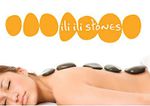What is Myofascial Release Therapy?
Myofascial release is a type of manual therapy that involves applying gentle pressure to tight spots in the muscles, ligaments and tendons to eliminate pain and restore range of motion. During a therapy session, the therapist loosens up the restricted fascia, which is the connective tissue that holds groups of muscles together, by holding down the affected area with sustained pressure. In doing so, they manage to improve blood circulation, relieve muscle pain, release excruciating muscle knots, restore balance and synchronise the muscle activities in the affected area.
Myofascial therapy is often incorporated into other massage techniques, including sports massage and remedial massage, to address a fascia restriction due to injury or other reasons. This modality shouldn't be confused with regular massage as myofascial release requires more pressure, intense kneading and muscle stretching to release tension and knots, improve circulation and mobility, and eliminate pain and discomfort, which are almost always the cause of stress.

Why Study Myofascial Release Therapy?
The benefits of myofascial release therapy exceed those of a regular massage session. Studying and mastering the techniques employed in this manual therapy will no doubt propel your career to greater heights, providing you with the skills to treat a slew of chronic musculoskeletal conditions.
Most people think getting a massage treatment will make the painful region on their back or shoulder disappear. Little do they know that it's myofascial release therapy that addresses this issue, hence the reason it should be available in your healing arsenal.
What Does It Take to Study Myofascial Release Therapy or Become a Practitioner of It?
Having good observation and tactile skills matter a great deal when you're studying myofascial release therapy, as these will help you identify which areas in the body have fascia restrictions. Having excellent listening and communication skills in addition to being observant is also key because without these, you won't be able understand what your client needs and explain to them what needs to be done to fix their problem.
Course and Study Options for Myofascial Release Therapy
To qualify as a myofascial release therapist, you have to obtain a certificate in this modality from an accredited training provider. Although it's a hands-on approach to treating different musculoskeletal conditions, myofascial release can be learnt on different platforms. Some schools deliver the coursework on-campus, while others give their students the liberty to study online at their convenience.
If you maintain a 9-to-5 job or run the household during the day, you may opt for a course provider that offers evening or weekend classes so as not to compromise your day-to-day schedule.
The certificate program will walk you through the principles of myofascial release, the steps in conducting client assessment, as well as the techniques used to loosen up tight fascia. A Certificate IV in Massage Therapy, or another qualification that covers anatomy and physiology, is a prerequisite for this course.
How to Choose a School or Course in Myofascial Release Therapy
To land in a school that provides industry-recognised qualifications for myofascial release therapy, you must be able to identify its characteristics. First of all its training courses are recognised by Australia's peak bodies for myofascial release practitioners, including the Australian Traditional Medicine Society (ATMS), Australian Natural Therapists Association (ANTA) and Massage & Myotherapy Australia (MMA), among others. Secondly, certified therapists take their CPE courses here.
Now that you can differentiate a legit course provider for myofascial release and from one that's not, finding the ideal school is going to be a breeze. In fact, you can refer to our comprehensive list of training providers above to make the selection process easier. Once you have spotted a course provider whose offerings align with your goals and needs, feel free to contact them directly to find out more about their syllabus, course fees and delivery method.









